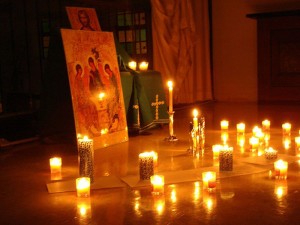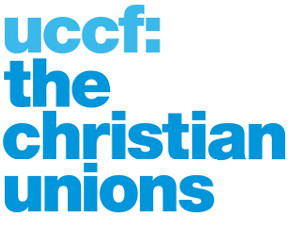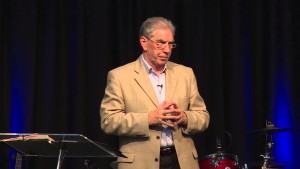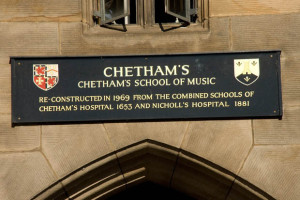 After the rant I made several days ago on the subject of popular Christian music, it might seem surprising that I return to the subject to make a positive appreciation of other kinds of music in church. I was then objecting to the popular music which Chris describes as giving him brain fever and also leaving behind in the brain a disturbing beat. In short I object to a certain style of church music because it leaves behind all the symptoms of being exposed to excessive noise. I suggested also that the bedrock of Christian spirituality was silence. Anything, including popular music, which prevents an immersion into such silence was going to be unhelpful, to say the least, for Christian prayer.
After the rant I made several days ago on the subject of popular Christian music, it might seem surprising that I return to the subject to make a positive appreciation of other kinds of music in church. I was then objecting to the popular music which Chris describes as giving him brain fever and also leaving behind in the brain a disturbing beat. In short I object to a certain style of church music because it leaves behind all the symptoms of being exposed to excessive noise. I suggested also that the bedrock of Christian spirituality was silence. Anything, including popular music, which prevents an immersion into such silence was going to be unhelpful, to say the least, for Christian prayer.
I do in fact believe that there is music within the Christian tradition which can still the mind and prepare it to enter more effectively into this sphere of silence. The problem is that for many people this music is completely unknown. The religious music of the past, whether Gregorian chant or the sacred music of the Elizabethan age is not exactly at the top of the Pops. It is, as we say, an acquired taste. There is however one genre of music that does seem to appeal to a wide number of people when they encounter it and also helps them to become still as a prelude to prayer. I refer to the music of Taizé. This music written by Jacques Berthier picks up the melodies of a variety of periods and helps those who sing and those who listen to become still. The music’s power comes partly from the way that the same musical phrase is repeated over and over again. Because there are different accompaniments to the melody line of the song, the repetition never becomes boring. These melodies are specially composed or taken from one of a number of musical traditions in Christian Europe. They do seems to have appeal for almost everyone who hears them.
The music of Taizé would perhaps be used far more if our services were a little less wordy and more focussed on silence. The problem for most congregations is that those who conduct worship do not want to allow any empty space to occur in the service. Thus we have a quick movement from a prayer to a reading and then to a hymn. There is little opportunity for silent reflection in most of our church services. For myself Gregorian chant is a suitable introduction to a time of silence and also it does not intrude on attempts to meditate and think quietly about the will of God for our lives. Others may well be moved and assisted in their contemplative worship by the soaring notes of Tudor polyphony. Whatever style is preferred, there are a variety of church music styles which do in fact assist an individual in coming to a place of peace and prayer.
It is not easy to talk about these ‘classical’ styles of Christian music without being thought a cultural snob. But, as I have said, the more accessible music obtains its popularity by, arguably, only appealing to shallow sentiment or the attraction of an incessant drum beat. It is hard, as I suggested before, not to be affected by a loud noise of Christian popular music. The sound is often overwhelming but it is hard to see how this kind of beat music will ever assist an individual in the task of silent prayer. One wants to move from singing or listening to a piece of music so that the individual is led towards silence. There can be no silence within when there is the echo of frenetic drumbeat inside one’s head. The brain fever which Chris speaks about is never going to be conducive to still contemplation.
I am one of those people fortunate enough to have been brought up with the contemplative style of Christian music around me from a very early age. I have thus had the opportunity to enjoy and to be immersed in styles of music which I believe help in the process of stilling the heart and mind towards a consideration of the spiritual dimension. Music is a little bit like religious art in the sense that it communicates spiritual things without the use of words and logical concepts. I have returned to this theme of the spiritual being beyond the verbal many times in the blog as it is a point that is close to my heart. As the mystics would say, God is beyond words and human concepts, even being itself. If we are to know anything about him at all, we have to approach God through the assistance of these non-verbal media. These point to spiritual reality but they never contain it. Art and music are tantalisingly indirect in the way that they point us to what can never be known fully on this side of the grave.
The people who do theology in the way that I have learnt, will always prefer never to define mystery or spiritual reality. We can only go so far with words and explanations. In our imaginations we come to a threshold of a building in which we believe that God dwells. To enter further, to know God as he truly is, we have to use other means of access. One will be the human capacity to love. This is a capacity given to every person on the planet. Alongside this means of approach towards the unknowable God, we have the tools of music and art. These always have to be used carefully and sensitively so that in the best way possible their power can be utilised in this search for the unknown. But, as this blog post has made clear, the journey towards God can often utilise the tools of music which draws the individual into silent prayer. This may one of any number of styles, perhaps Gregorian chant or the music of Taizé. Such music, as I have explained above, will never be used to fill the brain with sensation, but will always help to still and quieten the mind so that it can kneel before God in love and adoration.








